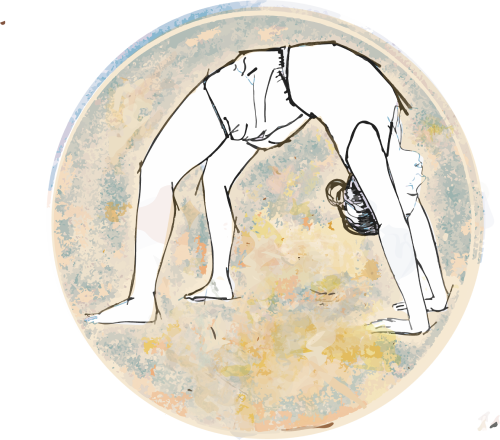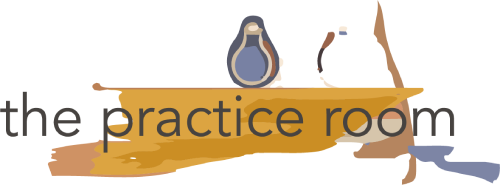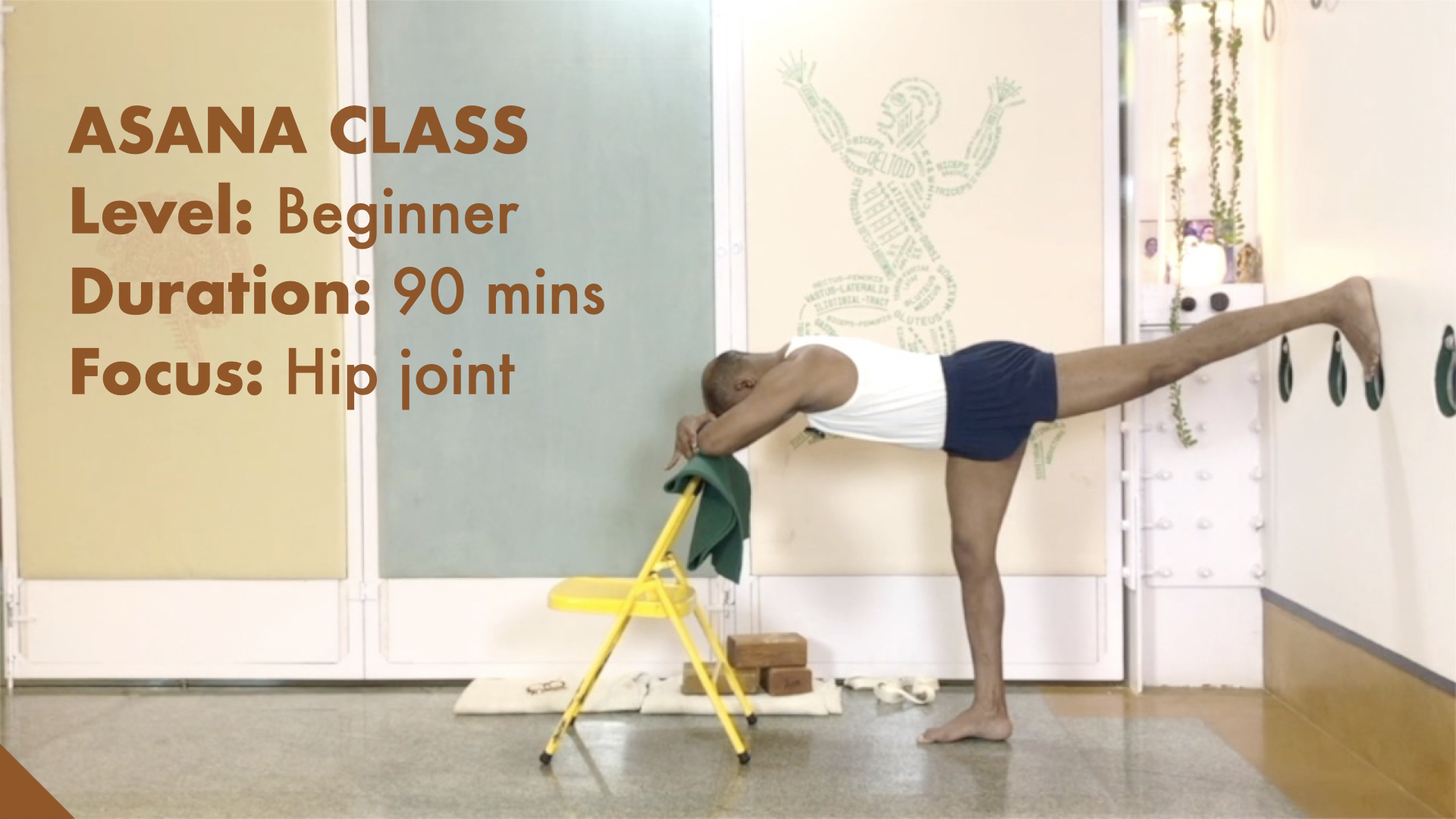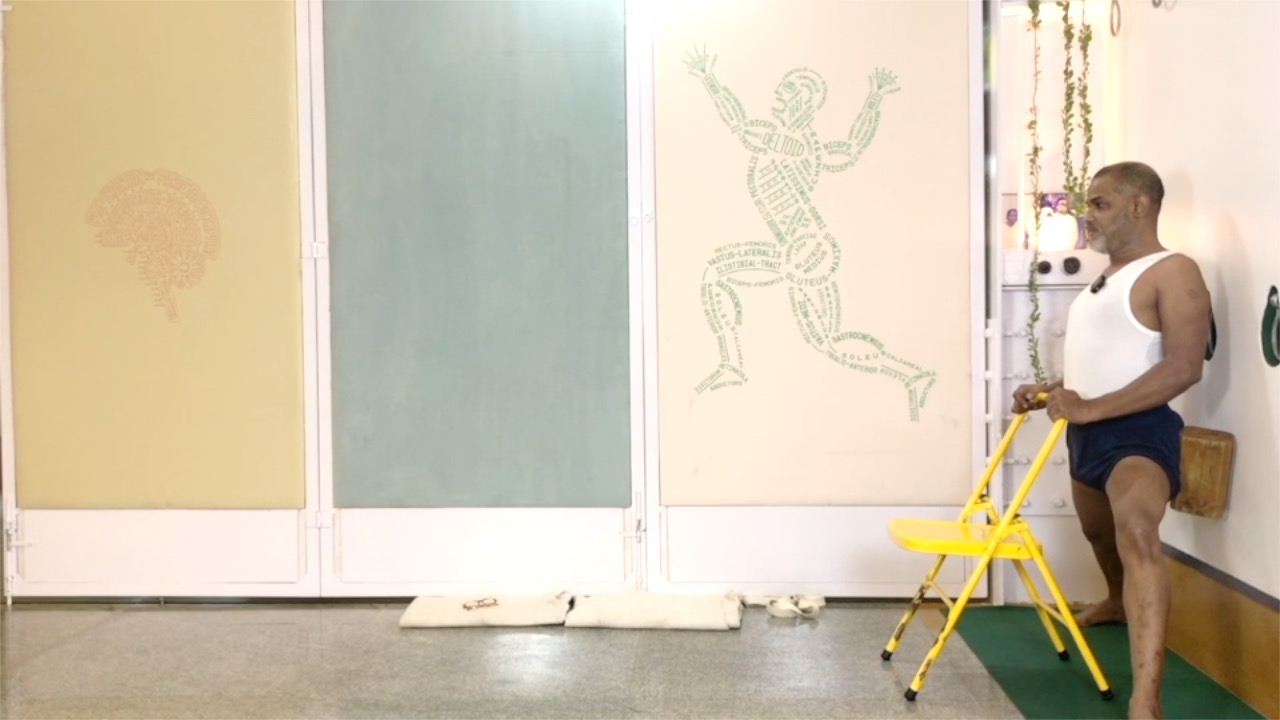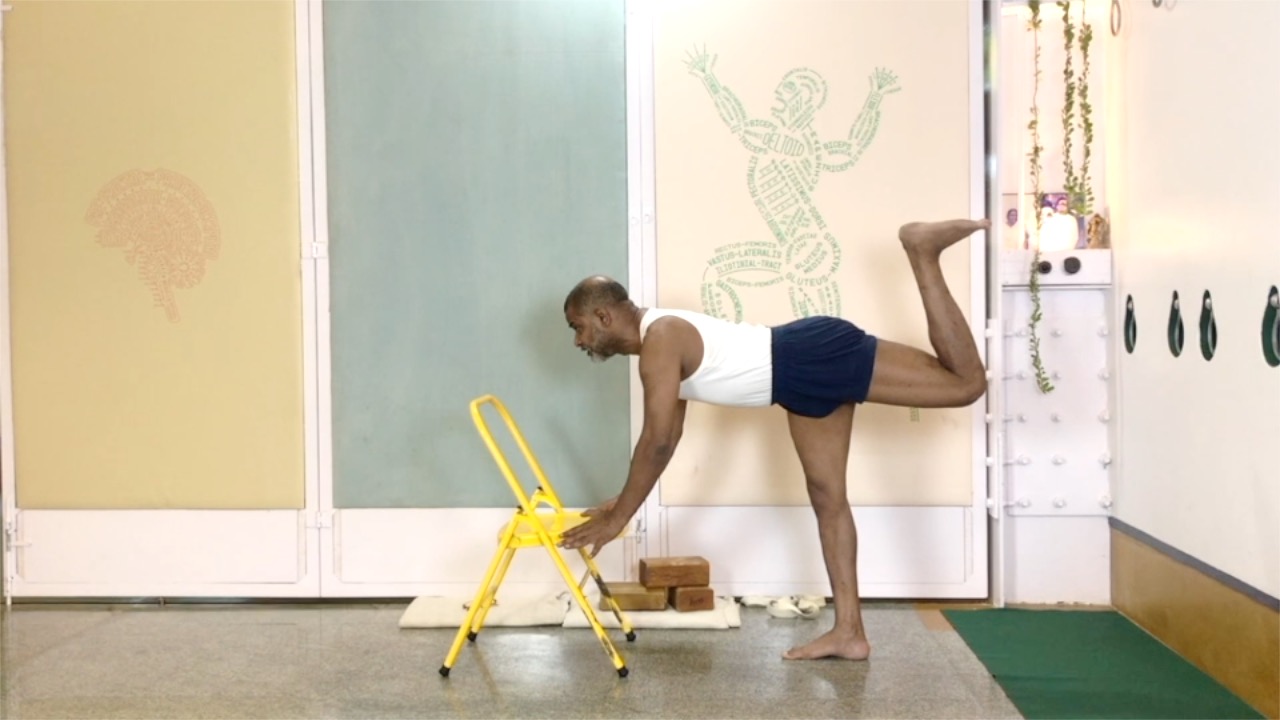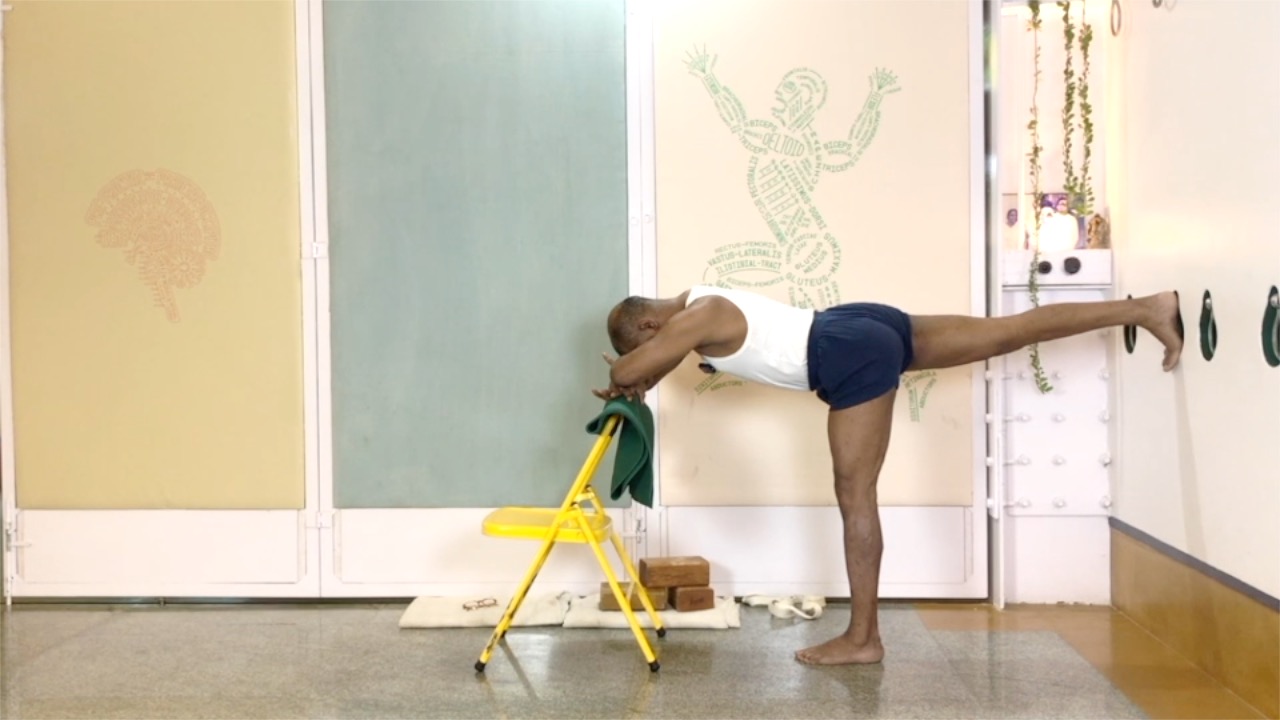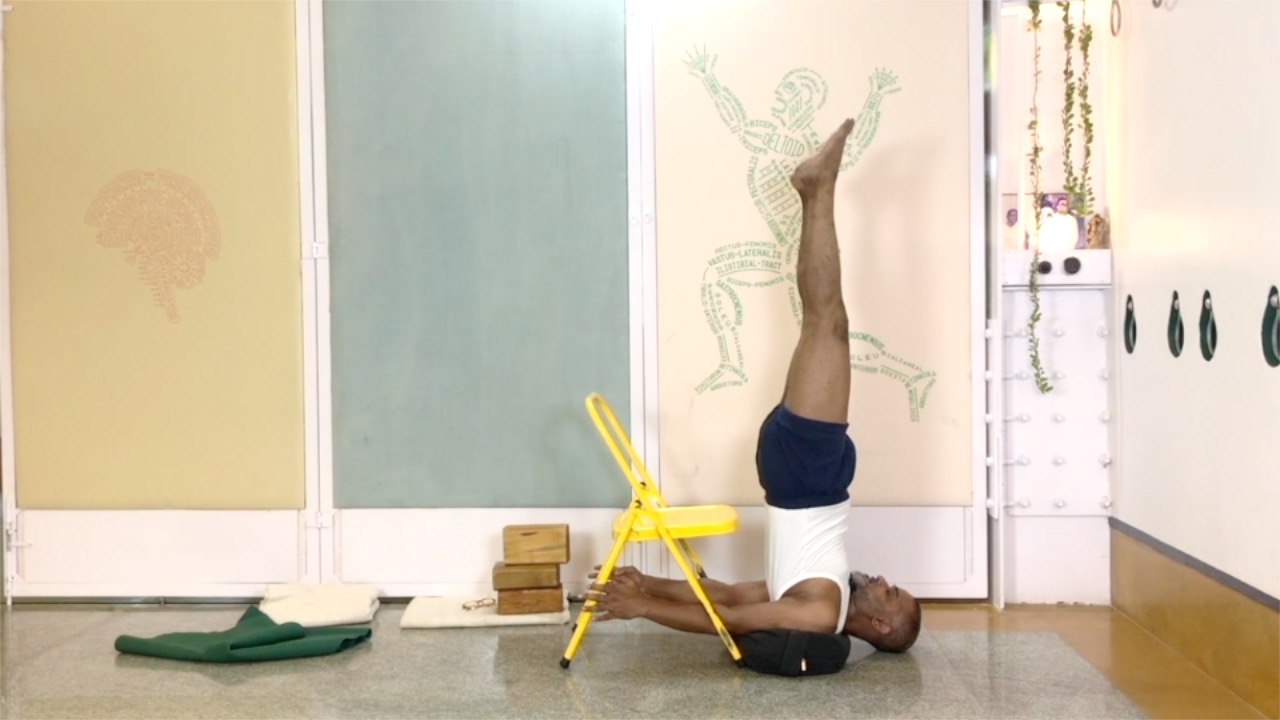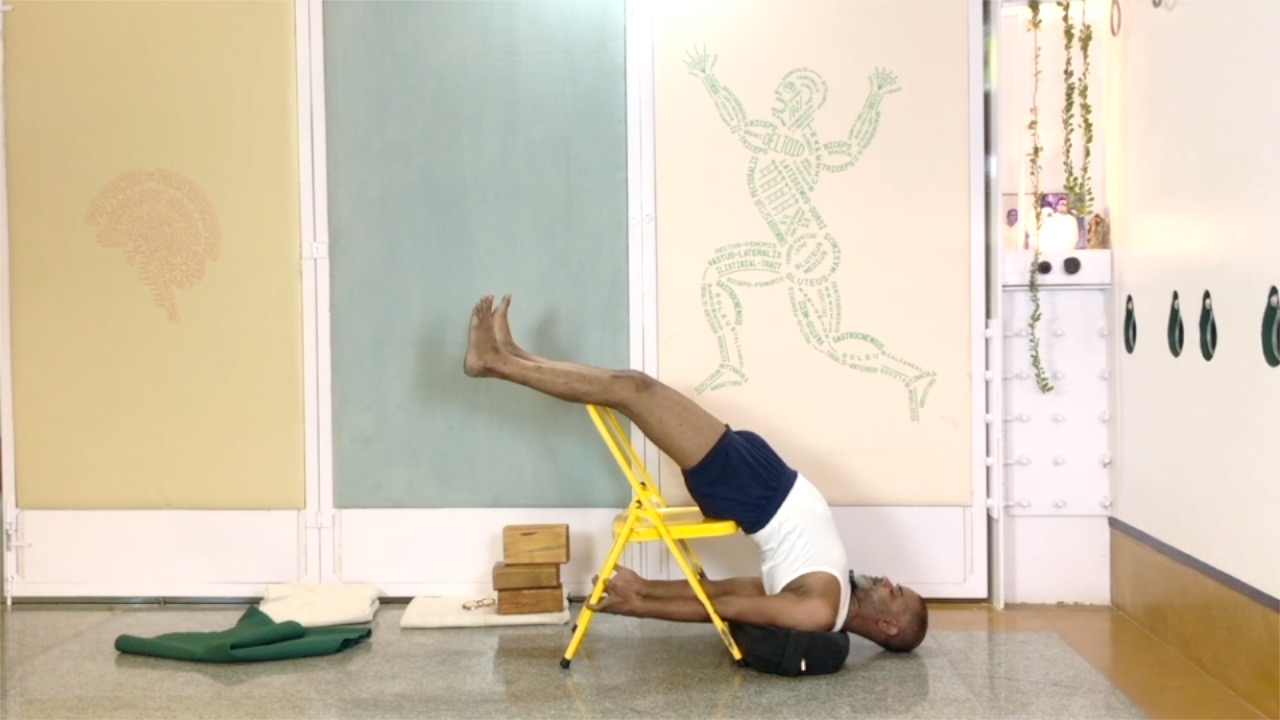Hip bones are connected to femur bones (thigh bone) forming the primary connection between the bones of the lower limb and the axial skeleton. This connection is through the large ball and socket joint of the hip. The thigh bone is called a femur bone and not only is it the strongest bone in the body, it is also the longest. Femur bone is the strongest bone in the human body.
The Hip bone is kept in place when these 2 femur bones on either side are kept strongly in its socket and when the para spinal muscles of the lower back are extended upwards. The outward rotation of the upper thigh region must correspond with the extension of the para spinal muscles of the lower back to keep the hip stable.
A healthy hip is both flexible (i.e. it has mobility) and also firm. This session explores both perspectives, exploring both ‘active’ actions and ‘passive’ extensions. An overview session ending in a supported inversion.

